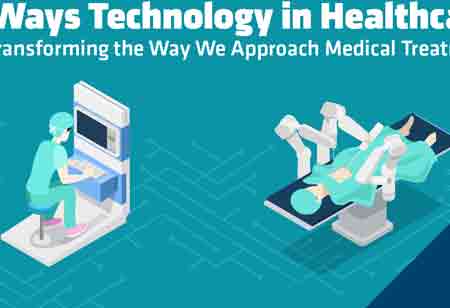Thank you for Subscribing to Healthcare Business Review Weekly Brief
Impact of Wearable Technology in Healthcare Industry

Be first to read the latest tech news, Industry Leader's Insights, and CIO interviews of medium and large enterprises exclusively from Healthcare Business Review
Thank you for Subscribing to Healthcare Business Review Weekly Brief

By
Healthcare Business Review | Tuesday, June 01, 2021
Stay ahead of the industry with exclusive feature stories on the top companies, expert insights and the latest news delivered straight to your inbox. Subscribe today.
Nowadays, the Smart Healthcare system relies on highly competent medical experts and wearable app development businesses' cost-effective approach.
FREMONT, CA: Due to the extreme elderly population, rising health awareness, and shifting perspectives towards preventive healthcare, wearable technology has become increasingly prominent in the health sector. Nowadays, the Smart Healthcare system relies on highly competent medical experts and wearable app development businesses' cost-effective approach.
As a result, a patient might be responsible for monitoring and diagnosing their health utilizing wearable gadgets linked to smartphone apps for alarm messages. That is why key market companies continue to invest heavily in wearable technology, demonstrating its significance.
The Unparallel Advantage for the Patient
It has already shown to be a lifesaver for people who require regular monitoring due to chronic diseases. It helps clinicians recall and verify medical facts to assess the patient's condition accurately. Patients utilize patches that are easy to implement to their skin to collect pertinent real-time medical-grade data to generate an unbiased outcome.It is also useful as an alternate for hospitalization for patients who require hourly monitoring, as it records all data and may analyze for further diagnosis.
Mitigated Medical Expenses
Wearables helped reduce the expensive healthcare spending by removing the requirement to confirm that visits to hospitals cost patients more money due to high consultation fees and other expenses and time. Essentially, it covers the advantages for individuals with chronic diseases such as diabetes, hypertension, and blood pressure, which necessitate continuous monitoring.It guarantees that diagnosis patients' medical conditions early, surgical procedures are more superficial, and reduce healthcare costs and repercussions.



